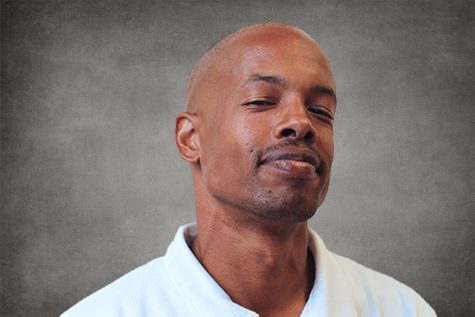Assorted interests fuel pursuit of higher education
Assorted interests fuel pursuit of higher education
Mar 1, 2017
Many high school athletes dream of attending their favorite college directly after graduation, however the shifting reality of increased tuition coupled with the success junior college transfers have garnered on the professional level has made community college more attractive.
Aside from saving money, attending, playing and transferring from a JC changes the selection process an athlete uses to determine which college he or she will enroll at next.
“I’m looking to go to a Division I or Division II college and it’s important in soccer to connect with your teammates and coaches because you are going to be playing there for two years,” computer science major and Comet goalkeeper Mohammadhasein Jumshidian said.
“Most importantly, the courses that the school offers have to be compatible with my major.”
Transferring students already have an educational plan and major so it adds the layer of decision making to determine if a school has an educational program in line with the student-athlete’s major.
For Contra Costa College, athletes come in all shapes, sizes and levels of athletic ability.
And although many aspire to play professionally at some point, all are focused on making sure that the time they each have invested in CCC athletics translates to a smoother path toward higher education.
Some athletes receive a flood of offers from schools nationwide to entice students to come be a part of their athletic program. Even when choosing from a collection of colleges vying for acceptance, students still must go through the list of bullet points to see if a school is the right fit for them.
Comet sophomore defensive back Rodney Washington said, “For me it came down to who wanted me the most and who was going to make sure that I was on the right path.
He has committed to attend Florida Atlantic University to play for coach Lane Kiffin, a former Oakland Raider head coach and the former offensive coordinator for the 2015 national champion University of Alabama.
“I want to make an immediate impact. They have a new coach (Kiffin) and a great coaching staff. It’s the best opportunity to get me to the league (NFL).”
Washington made the All-Conference first team defense in both of his years playing for the Comets.
But Washington’s path is not the norm for athletic hopefuls. According to statistics compiled by the National Collegiate Athletic Association (NCAA), only 5.7 percent of high school football players go on to compete at the NCAA Division I and II levels.
The prospects aren’t much more encouraging for the other of the big four sports widely regarded as American staples.
For athletes that play high school sports, only 6.1 percent of baseball players, 5.5 percent of soccer players and 3 percent of basketball players make it into the NCAA ranks.
In Washington’s case, the prospects are even dimmer, as only 250 players are drafted into the NFL each year, which translates to roughly 1.8 percent of college football players going pro.
Still, every year students make their way to community colleges nationwide in an attempt to capture a dream that for so many never becomes a reality.
Despite not reaching the ultimate goal of earning a multi-million dollar contract, students who participate in college graduate at an extremely high rate.
CCC sophomore catcher and volleyball player Amy Palomares said, “For me, the focus has always been about being a student-athlete — student first. It’s been all about school and my major, not just about me playing softball and volleyball.
“The academics have to be right for me to attend any school. Even if they want to pay for school for me to play a sport, the classes have to be right. I’m not going to play softball for the rest of my life.”
There is a measurable long-term improvement in quality of life that results from pursuing athletic dreams in high school and college. Just as important as the health benefits, graduation rates for NCAA athletes have seen a 12 point increase from 74 percent to 84 percent over the last 14 years.
The 84-point mark is two points higher than last year and is the highest the rate has been since the graduation success rates have been tracked.
Female African-American student-athletes increased five points to 84 percent, another all-time high.
Women’s basketball student-athletes earned degrees at an 89 percent rate, a 2 point increase over last year.


